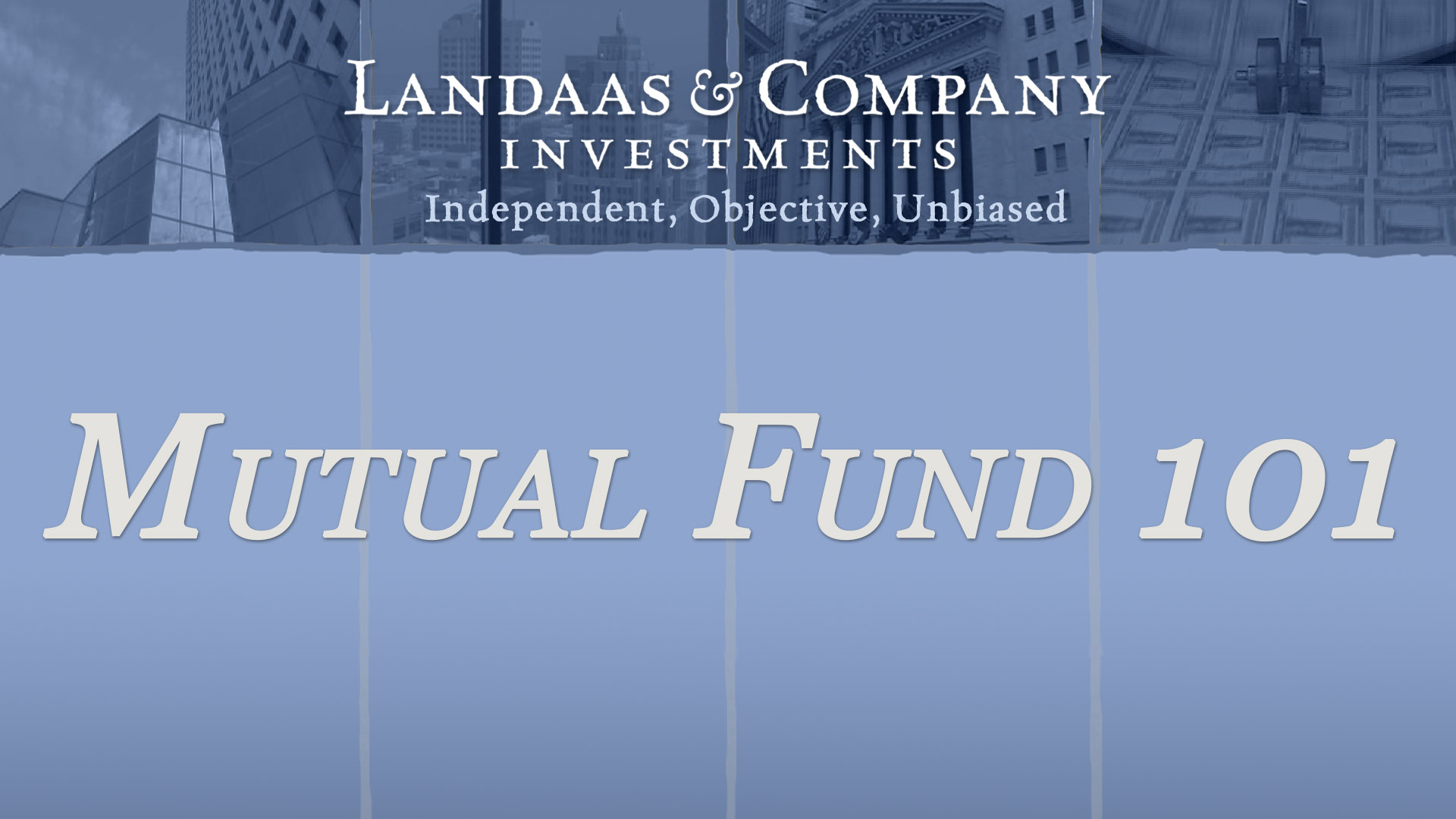 Check your answers to the Mutual Fund 101 Quiz below. Click on the links beneath each group of answers to see the related Money Talk Videos.
Check your answers to the Mutual Fund 101 Quiz below. Click on the links beneath each group of answers to see the related Money Talk Videos. To peruse all of the Mutual Fund 101 videos, click here on Landaas.com or here on the Landaas Money Talk YouTube channel.
1. Academic research has credited more than 90% of the variability in long-term investment returns to which one of the following?
- market timing
- asset allocation
- stock picking
- interest rate environment
View: Talking Money: Allocation
2. Which one of the following factors is NOT proven to contribute to a mutual fund’s long-term success?
- low expenses
- use of complex securities
- investment process consistency
- management investing own money in the fund
View: Narrowing the selection of mutual funds
3. Which one of the following can NOT be used to describe the passive approach toward managing mutual funds?
- set it and forget it
- rules-based
- flexible
- index-based
View: Sorting through investment fund managers
4. Which one of the following is NOT a useful tool in choosing an active mutual fund manager?
- the fund’s prospectus
- third-party evaluations
- conversations with the manager
- the fund’s performance last week
View: Sorting through investment fund managers
5. Which one of the following can NOT be used to describe a mutual fund prospectus?
- a way to project future returns of the fund
- a document written for lawyers by lawyers
- an outline of the fund’s objectives and risks
- one place to find how much a fund costs
View: Understanding your investments: Prospectus
How to read a mutual fund prospectus
6. Which publication is best for the average investor to easily find the key information they need to know about a mutual fund?
- statutory prospectus
- summary prospectus
- semi-annual report
- annual report
View: How to read a mutual fund prospectus
Know a mutual fund beyond its prospectus
7. In examining a mutual fund, the best use of historical results is to:
- project how the fund will perform in the future
- determine whether the fund is worth its expense
- consider the range of gains and losses experienced over an extended period
- estimate the total return of the fund for the next three years
View: How to read a mutual fund prospectus
Know a mutual fund beyond its prospectus
8. Past performance is no guarantee of future results. So why look at the past performance of mutual fund managers?
- It’s all we have to go on.
- You can compare what they did to what they said they would do.
- Managers who have underperformed try harder.
- Success builds on itself.
View: Investment results: Success or luck?
9. How many style categories are in Morningstar style boxes; what criteria are used for the categories?
- 4; expense level and asset value
- 6; active/passive and corporate assets
- 9; value/core/growth and company size
- 16; interest rates and earnings
View: Style Box: How equities are allocated
10. What is the chief attraction of investing in an index fund?
- risk management
- popularity
- ability to adjust to market conditions
- low cost
View: Indexes: Low costs, less flexibility
(initially posted March 10, 2016)
More Insight and Information from Money Talk